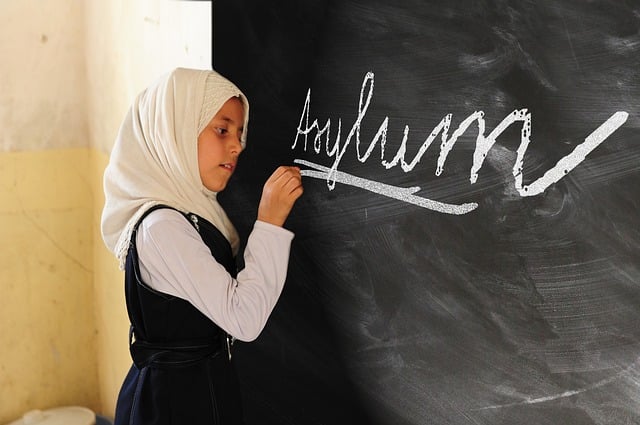How Many People Come to The UK Each Year
Why Is Statistics Important?
Statistics provide the information to educate how things work. They’re used to conduct research, evaluate outcomes, develop critical thinking, and make informed decisions. Statistics can be used to inquire about almost any field of study to investigate why things happen, when they occur, and whether reoccurrence is predictable.
The Migration Observatory at the University of Oxford produces impartial analysis of migration in the UK. Their research helps us, policymakers, civil society and the media understand the implications of data and research about migration. The numbers answer important questions about how migration is changing, how policies affect migration and its impacts, and what are the social and economic effects of migration in the UK.
Two Parts
There is a lot to cover. For your convenience, I have subdivided this article into two parts. This is part 2. You can read part 1 HERE.
Family Visas
82,395 family members were granted permission to enter the UK to join their loved ones. 79% of these grants were to partners, and the rest were given to their children (10,397) or other dependents (6,720).
The UKVI granted a total of 127,055 EUSS family and travel permits to family members of people from the EU, the European Economic Area (EEA), and Switzerland. In the year ending September 2023, there were 22,675 EU Settlement Scheme permit grants. All successful applicants could apply to the EU Settlement Scheme once in the UK.
The top 5 nationalities are:
- Pakistan (15,038)
- India (5,870)
- United States (3,805)
- Bangladesh (3,716)
- Nepal (3,354)
Humanitarian Routes
112,431 people came to the UK because they needed the UK’s protection.
This includes:
- 64,264 Ukraine Scheme visas (including Ukraine Family, Sponsorship, and Extension Schemes). The UK government introduced this route in 2022 following the Russian invasion of Ukraine. The route allows those affected by the war to come to the UK. Approximately 188,900 Ukrainians and their family members have come to the UK since the introduction of this scheme.
- 40,243 British National (Overseas) visa grants. The UKVI introduced this UK immigration in 2021 to provide those with BN(O) status the opportunity to live, work and study in the UK
- 6,114 family reunion visa grants
- 1,810 people resettled or relocated (with 1,110 under Afghan schemes)
Protection

There were 75,340 asylum applications in the UK in the year ending September 2023. Afghanistan was the most common nationality to apply for asylum, with 10,305 applications. The second most common nationality to claim asylum in the UK was Iranian nationals ( 7,174).
38,761 people were granted refugee status or other protection following an asylum application in the year ending September 2023. This is the highest number granted in a year since 2002.
The third most common nationality to claim asylum in the year ending September 2023 was Albanian nationals, with 5,106 applications.
Small boat arrivals accounted for over one-third (37%) of the total number of people claiming asylum in the UK:
- 36,003 people got their refugee permission
- 130 people received temporary refugee permission
- the Home Office granted 1,999 humanitarian protection applications
- 629 people were granted alternative forms of protection or leave. This includes discretionary and UASC leave. UASC is a temporary leave for young people whose asylum claim is refused. UASC leave lasts for a maximum of 30 months, or until the young person is 17.5 years old (whichever is sooner), when they can appeal, make a fresh claim, or plan to leave the UK.
This grant rate is substantially higher than in pre-pandemic years. Before 2022, only approximately one-third of applications were successful at the initial decision. Historically, the highest grant rate of the grants was 82% in 1990.
Asylum Applications Awaiting an Initial Decision
At the end of September 2023, there were 125,173 cases awaiting an initial decision, which is 7% less than the previous quarter. Of these cases, approximately one-third of applications were legacy cases. Legacy cases are those that remained undecided for a prolonged period of time (usually over 5 years). Since the previous quarter, the legacy backlog decreased by 42%.
In the year ending March 2023, 16% of 87,366 asylum applications were decided within 6 months, compared with 7% in the year ending March 2022. This is because the UKVI hired more asylum decision-makers who could progress these applications.
Extensions and ILRs
In the year ending September 2023, there were 689,844 grants of extension in the UK. This was mainly due to work visas (468,168, which made up 68% of all extensions).
Two-thirds of those extending their work visas did so in the Worker category (312,834), which included Human Health and Social Work Activities (53% of main applicant extensions in this category). Another 10% were in the Information and Communications sector and 9% in the Professional, Scientific and Technical Activities sector.
The Graduate route allowed 129,187 students to remain in the UK in order to find a job.
Other categories included study (64,715) and family visa extensions (116,166). 67,864 were in the family life, 10-year route. The UKVI approved 47,353 applicants who applied to extend under the partner route.
However, sadly, the Home Office refused 15,223 applications.
Also, the UKVI granted 112,444 indefinite leave to remain, allowing the applicants to settle in the UK.
British Citizenship

British citizens can live and work in the UK free of any immigration controls. They can apply for a British passport, register to vote in all forms of election and referenda, and share in all the other rights and responsibilities of their status.
You can have dual citizenship in the UK. This means that you can be both a British citizen and a citizen of other countries.
There were 225,458 applications for British citizenship in the year ending September 2023. The Home Office granted 181,879 of these applications. 42,273 grants of citizenship were to EU nationals.
Italian nationals were the top EU nationals granted citizenship in the year ending September 2023 (8,982). 5,782 Romanians and 5,433 Polish nationals got their naturalisation applications approved.
The top non-EU nationals granted British citizenship were:
- Indian nationals (16,872)
- Pakistani nationals (15,305)
- Nigerian (8,249) nationals.
To read part 1, click HERE.
